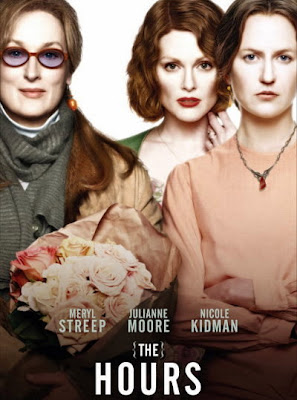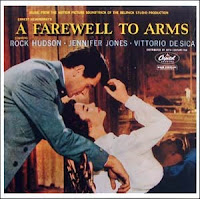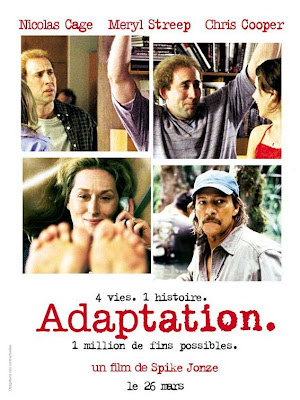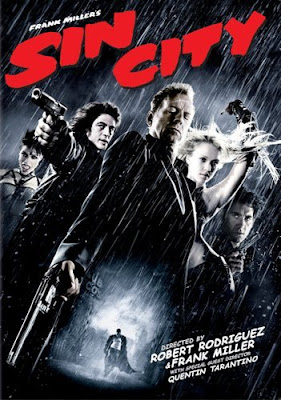Sunday, September 30, 2007
Every discipline has its own language
Dr. Femi Shaka, Academician, University of Port Harcourt
read more: http://allafrica.com/stories/200709170288.html
All Quiet on the Western Front-1930 (Full movie)
All Quiet on the Western Front is an Academy Award-winning film based on the Erich Maria Remarque novel All Quiet on the Western Front. It was directed by Lewis Milestone, and stars Louis Wolheim, Lew Ayres, John Wray, Arnold Lucy and Ben Alexander.
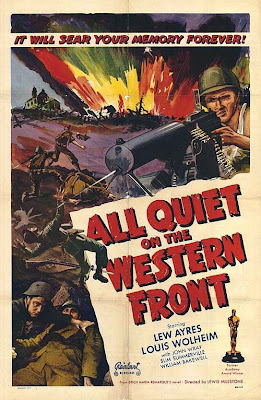 Released in 1930, it is considered a realistic and harrowing account of war and World War I, and was named #54 on the AFI's 100 Years... 100 Movies. Also, in 1990, this film was selected and preserved by the United States Library of Congress' National Film Registry as being deemed "culturally, historically, or aesthetically significant."
Released in 1930, it is considered a realistic and harrowing account of war and World War I, and was named #54 on the AFI's 100 Years... 100 Movies. Also, in 1990, this film was selected and preserved by the United States Library of Congress' National Film Registry as being deemed "culturally, historically, or aesthetically significant."
Synopsis
The film opens with a military parade and a rousing speech by a schoolmaster convincing his young students to enlist and "save the fatherland". The young enlistees are then portrayed in basic training, aching for "action" fighting in the war. Their training officer tells them to forget everything they know, they are going to become soldiers. Rigorous training diminishes the recruits' enthusiasm some. But after little more than marching drills, suddenly the cadets are told they are "going up front".
Next the new soldiers arrive by train to the combat zone. It is mayhem with soldiers everywhere, incoming bombs and horse-drawn wagons racing around and rain. One in the group is killed before they even move away from the train. The new soldiers "fresh from the turnip patch" are assigned to a unit composed of older soldiers who are not exactly accommodating. The young soldiers are shocked to find out there is no food available at their post. They have not eaten since breakfast but their new unit has not had food for two days. They have sent out a scrounger to locate something to eat and he returns with a slaughtered hog. The young soldiers have to "pay" for their dinner with cigarettes.
 "For the fatherland" the young soldiers unit is sent out on night duty. They travel packed into a flat cargo truck like sardines. The driver leaves them saying "If there's any of you left, there will be someone here to pick you up in the morning". The young recruits look longingly at the truck as it leaves. An experienced soldier gives the "schoolboys" some real world instructions, telling them how to deal with incoming shells, "When you see me flop, you flop. Only try to beat me to it". The unit is stringing wire and trying to avoid shells. Flares light up the night sky as the enemy tries to spot them, machine guns sound and a bombardment (heavy incoming shells) starts. A young soldier is blinded by shrapnel and runs around screaming. Most of the soldiers stay low in the trenches. When the truck arrives in the morning most of the unit has survived. More rain.
"For the fatherland" the young soldiers unit is sent out on night duty. They travel packed into a flat cargo truck like sardines. The driver leaves them saying "If there's any of you left, there will be someone here to pick you up in the morning". The young recruits look longingly at the truck as it leaves. An experienced soldier gives the "schoolboys" some real world instructions, telling them how to deal with incoming shells, "When you see me flop, you flop. Only try to beat me to it". The unit is stringing wire and trying to avoid shells. Flares light up the night sky as the enemy tries to spot them, machine guns sound and a bombardment (heavy incoming shells) starts. A young soldier is blinded by shrapnel and runs around screaming. Most of the soldiers stay low in the trenches. When the truck arrives in the morning most of the unit has survived. More rain.
Back at the base (bunker in the trenches), the soldiers play cards and fight off the rats who eat their food and gear. The young soldiers are showing signs of great stress: nightmares, shaking uncontrollably, and screaming about the unrelenting bombs. A wall collapses and buries one of the recruits. No place is safe, not the front, not the base. There is no relief from the war. The celebratory parade already seems a distant memory. One recruit loses control, runs out of the trench and is injured. Some of the soldiers want to leave the trench and attack but the enemy seems to have superior firepower. When food finally comes, the men have to fight to get their share. Then they are overcome by rats and kill them with spades. Suddenly there is a break in the bombing and the men are ordered out to fight.
A loud rumbling can be heard as the enemy approaches and then more shells. Now the soldiers are in trenches with rifles ready as incoming shells move closer and closer. They can do nothing but wait and hope. Now the enemy is in view running toward the trenches, but the Germans hold their fire until the enemy is close. At least they have the advantage of being in trenches, the enemy is advancing over an open field. The Germans use machine gun fire and hand grenades and they rifles to mow down the enemy, quite effectively. The enemy suffers great losses but succeeds in entering the trenches where hand-to-hand combat with bayonets commences.
The enemy overruns the trenches and the Germans fall back, occupying bomb craters. The enemy is overwhelming now and the Germans fall back to a second row of trenches. German shells rain heavily on the enemy after which the Germans attack in hand-to-hand combat. The enemy has occupied the first row of trenches with machine gun positions and inflict heavy casualties on the Germans. The battle winds down. 70 of the 150 men in the unit have been killed. The cook is mad because he cooked for 150. (54 minutes)
Read more: http://en.wikipedia.org/wiki/All_Quiet_on_the_Western_Front_%281930_film%29
Monday, September 24, 2007
The Grapes of Wrath (1940, Full Movie )
The Grapes of Wrath is an American 1940 film directed by John Ford. It was based on the Pulitzer Prize winning 1939 novel, of the same name, written by John Steinbeck.
The screenplay was penned by Nunnally Johnson and executive produced by Darryl F. Zanuck.
The film is about an Oklahoma family, the Joads, who become migrant workers in California after losing their farm during the Great Depression in the 1930s. The motion picture also details their arduous journey across country to California.
The film premiered in New York City on January 24, 1940, and Los Angeles on January 27, 1940. The wide release date in the USA was March 15, 1940.
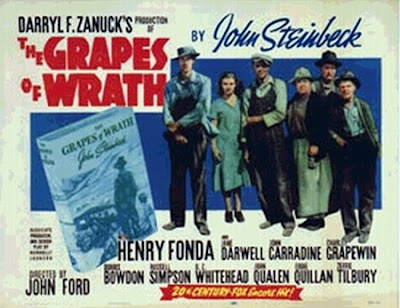 Plot
Plot The film opens with Tom Joad (Henry Fonda) being released from prison and hitchhiking his way back to his family farm in Oklahoma only to find it deserted.
Tom finds an itinerant ex-preacher named Jim Casy (John Carradine) sitting under a tree by the side of the road. Tom remembers that Casy was the preacher who baptized him, but now Casy has "lost the call" and his faith. Casy leads him to find his family at Uncle John's place. His family is happy to see Tom and expain they have made plans to head for California in search of employment as their farm has been foreclosed by the bank.
The large Joad family of twelve leaves at daybreak, packing everything into an old and dilapidated modified truck in order to make the long journey to the promised land of California.
The trip along Highway 66 is arduous and it soon takes a toll on the Joad family. Weak and elderly Grampa is the first to die on their journey. After he dies, they pull over to the shoulder of the road, unload him, and bury him. Tom writes the circumstances surrounding the death on a page from the family Bible and places it on the body so that if his remains were ever found his death would not be investigated as a possible homicide.
They park in a camp and they meet a man, a returning migrant from California, who laughs at Pa's optimism about conditions in California and who speaks bitterly about his awful experiences in the West. He hints at what the Joads will soon find out for themselves.
The family arrives at the first transient migrant campground for workers and find the camp is crowded with other hungry, starving, jobless and desperate travelers. Their truck slowly makes its way through the dirt road between the shanty houses and around the camp's hungry-faced inhabitants. Tom says, "Sure don't look none too prosperous."
After some trouble with a "so-called" agitator, the Joad's leave the camp in a hurry.
The Joad's make way to another migrant camp named the Keene Ranch. After doing some work in the fields they discover about the high food prices in the company store for meat and other products. The problem is that the store is the only one in the area, by a long shot. Later they find there is a striking group of migrants in the camp and Tom wants to find out all about it. Tom goes to a secret meeting in the dark woods.
The meeting is discovered and Casy is killed by one of the guards. Tom defends Casy from the vicious attack and kills the attacking guard in retaliation.
During the altercation, Tom suffers a serious face wound on his cheek and the guard realizes it won't be difficult to identify him.
That evening the family hides Tom under the mattresses of the truck just as guards arrive to question them and search for the killer of the guard. Tom avoids being spotted and the family successfully leave the Keene Ranch without further incident.
At the top of a hill, the car runs out of gas, and they're able to coast into a third type of camp: a clean camp run by the USDA.
After Tom becomes personally idealized by what he has witnessed in the various camps, he describes how he will carry on Casy's mission in the world by fighting for social reform. Tom goes off to seek a new world, and he must leave his family to join the movement committed to social justice.
He says:
- I'll be all around in the dark. I'll be everywhere. Wherever you can look, wherever there's a fight, so hungry people can eat, I'll be there. Wherever there's a cop beatin' up a guy, I'll be there. I'll be in the way guys yell when they're mad. I'll be in the way kids laugh when they're hungry and they know supper's ready, and when people are eatin' the stuff they raise and livin' in the houses they build, I'll be there, too.
Background
Production on the film began on October 4, 1939, and completed on November 16, 1939.
The film's "fake" working title was "Highway 66." This is because John Ford needed to use Oklahoma in the highway scenes and Steinbeck's novel was very controversial with many of the state's citizens. The novel, in fact, had been criticized upon its release; nowhere more so than in the Midwest.
Pre-production
Producer Daryl F. Zanuck was nervous about the hard left political view found in the novel, especially the ending. Due to the red-baiting common of the era, Daryl Zanuck sent private investigators to Oklahoma to help legitimize the film. When Zanuck's investigators found the "Okies" predicament was indeed terrible, Zanuck was confident he could defend attacks that the film was somehow pro-Communist.
Still, Zanuck watered down the novel's tone for the film and as a consequence did much to sell the fictional Joads story to the general public in the United States. In addition, critic Roger Ebert believes that due to Adolf Hitler's rising to power in Europe in the 1930s, Communism enjoyed a respite from "American demonology," at least for a brief time.
Odd production bedfellows
Both executive producer Daryl Zanuck and director John Ford were odd choices to make this film because both were considered politically very conservative.
Filming locations
Some of the filming locations include: McAlester, Sayre both in Oklahoma; Gallup, Laguna Pueblo, and Santa Rosa, all in New Mexico; Lamont, Needles, San Fernando Valley, all in California; Topock, Petrified Forest National Park, all in Arizona.Critical reception
When released the film was well received by the film critics. But, it did have its detractors especially due to the leftist political overtones of the film.
Film critic Frank S. Nuggent, writing for The New York Times, liked the film's screenplay, the direction of the film and the acting. He wrote, "In the vast library where the celluloid literature of the screen is stored there is one small, uncrowded shelf devoted to the cinema's masterworks, to those films which by dignity of theme and excellence of treatment seem to be of enduring artistry, seem destined to be recalled not merely at the end of their particular year but whenever great motion pictures are mentioned. To that shelf of screen classics Twentieth Century-Fox yesterday added its version of John Steinbeck's The Grapes of Wrath, adapted by Nunnally Johnson, directed by John Ford and performed at the Rivoli by a cast of such uniform excellence and suitability that we should be doing its other members an injustice by saying it was 'headed' by Henry Fonda, Jane Darwell, John Carradine and Russell Simpson."
When critic Bosley Crowther, called the dean of American film critics, retired in 1967, he named The Grapes of Wrath one of the best fifty films ever made. (N.B.: 40% of the works Crowther named were foreign films.)
In a film review written for Time magazine by its editor Whittaker Chambers, an outspoken opponent of communism, he separated his views of Steinbeck's novel from Ford's film, which he liked. Chambers wrote, "But people who go to pictures for the sake of seeing pictures will see a great one. For The Grapes of Wrath is possibly the best picture ever made from a so-so book...Camera craft purged the picture of the editorial rash that blotched the Steinbeck book. Cleared of excrescences, the residue is a great human story which made thousands of people, who damned the novel's phony conclusions, read it. It is the saga of an authentic U.S. farming family who lose their land. They wander, they suffer, but they endure. They are never quite defeated, and their survival is itself a triumph."
Today's views

Ma, Tom, and Pa Joad.
Today the film has become an American classic and continues to be screened in many college campuses and union halls across the country. When the film was shown at a SEIU union hall in Baltimore film critic Bret McCabe penned a review. He especially liked the look of the film and wrote, "The Grapes of Wrath is riddled with such effectively mannered performances—particularly John Carradine's ex-preacher Casy and Eddie Quillan's driven-mad-by-desperation Connie. But the real star here is cinematographer Gregg Toland's vérité camerawork."
However, some analysts believe the "myth of the Okies," helped created by John Steinbeck's novel, is a mistake. As such, they argue the film's story rings false. Keith Windschuttle, writing for The New Criterion, wrote, "In the film of The Grapes of Wrath, Steinbeck's statement that people owned their land not because they had a piece of paper but because they had been born on it, worked on it, and died on it is given to the half-crazy character Muley Graves. His sentiments, and the injustice of the dispossession behind them, resonate throughout the drama. Again, however, these remarks bear very little relationship to the real farmers of Oklahoma."
Recent honors
On June 17, 1998 the American Film Institute selected the best American films of all time by a vote of 1,500 industry experts selected by the AFI. In a television program shown on CBS named AFI's 100 Years... 100 Movies The Grapes of Wrath placed 21st. In 2005, again, in a CBS program named AFI's 100 Years... 100 Cheers, the film moved up to 7th position.
Currently, the film has a 100% "Fresh" rating at Rotten Tomatoes, based on thirty-two reviews.
Cast and ratings
| Ratings | |
|---|---|
| Australia: | G |
| Canada (Manitoba): | PG |
| Canada (Quebec): | G |
| Finland: | K-16 |
| Portugal: | M/12 |
| Sweden: | 15 |
| United Kingdom: | A |
| United States: | Approved |
- Henry Fonda as Tom Joad
- Jane Darwell as Ma Joad
- John Carradine as Casy, former preacher
- Charley Grapewin as Grandpa Joad
- Dorris Bowdon as Rose-of-Sharon Rivers
- Russell Simpson as Pa Joad
- O.Z. Whitehead as Al Joad
- John Qualen as Muley Graves
- Eddie Quillan as Connie Rivers
- Zeffie Tilbury as Grandma Joad
- Frank Sully as Noah Joad
- Frank Darien as Uncle John Joad
- Darryl Hickman as Winfield Joad
- Shirley Mills as Ruthie Joad
- Roger Imhof as Mr. Thomas, ditch employer
- Grant Mitchell as Manager, government camp
- Charles D. Brown as Wilkie, boy lookout at dance
- John Arledge as Davis, bulldozer driver
- Ward Bond as Friendly Policeman, Bakersfield
Comparison to novel
The first part of the film version follows the book fairly accurately.
However, the second half and the ending in particular are significantly different from the book. While the book's ending tells of the downfall and ultimate break-up of the Joad family, the film switches the entire order of sequences so that the family ends up in a "good" camp provided by the government and events turn out relatively well.
Also, the novel's original ending was far too controversial to be included in the film. In the novel Rose-of-Sharon Rivers (Dorris Bowdon) gives birth to a stillborn baby and then offers her milk-filled breasts to a starving man, dying in a barn. That scene was deleted in the film.
Moreover, while the film is somewhat stark it has a more optimistic and hopeful view than the novel, especially when the Joads land at the Department of Agriculture camp--the clean camp. Also, the producers tone down Steinbeck's political references in the novel like the elimination of a monologue using a land owner's description of "reds" as anybody "that wants thirty cents an hour when we're payin' twenty-five" to show that under the prevalent conditions that definition applies to every migrant worker looking for better wages. And there is also a greater emphasis on Ma Joad's pragmatic, forward-looking way of dealing with their situation despite Tom's departure and concluding in her spiritual closing "We's the people" speech.
Shakespeare and the Movies
Shakespeare would have made a great movie writer.
—Orson Welles, stage and screen director
Shakespeare is no screen writer.
—Peter Hall, stage and screen director
Shakespeare and the Movies
The above quotes, which illustrate the fact that two prominent directors of films based on Shakespearean plays can differ so drastically on the issue of Shakespeare's writing and the movies, make it clear we are wading into dark waters here. Shakespearean cinema is the only subgenre of narrative film that remains the center of an ongoing debate—not only among skeptical literary traditionalists but even those cineastes who make the movies—as to whether it has a right to exist. First, though, to dispose of the traditionalists: critic John Ottenhoff, reviewing Much Ado About Nothing for Christian Century in 1993, proclaimed his prejudice outright: "My complaints about the limits of [Kenneth] Branagh's film indicate only that no performance can substitute for the richness of reading, discussing, and meditating upon a text."
With the words no performance, Ottenhoff dismisses stage as well as screen, expressing a dominant twentieth-century bias toward the Bard. Although academia has, for the better part of our century, been populated by like thinkers, it's important to recall that Gentle Will would strongly disagree. His plays were written to be seen, not read—at least not by anyone other than the company performing them. They were never printed in his lifetime, probably according to his wishes. The plays were meant to be enjoyed in the immediate sense, not as removed literary works to be studied, like butterflies mounted by some eager collector who presses out all the lifeblood and mummifies beauty under glass.
Orson Welles and Peter Hall, however, are another matter. Both dedicated their lives to bringing the words from the page to the stage—and screen. Hall's line of argument derives from an understanding of the essential difference between live theater and motion pictures as storytelling forms. Film professor Louis Giannetti once claimed that a blind man at a play would miss 25 percent of what was significant, the same amount lost on a deaf person watching a film. Since the advent of the movies, in nonmusical plays the word is primary; in film, however, image dominates. Or, as Hall put it, Shakespeare "is a verbal dramatist, relying on the associative and metaphorical power of words. Action is secondary. What is meant is said." However right for live theater, "this is bad screen writing. A good film script relies on contrasting visual images. What is spoken is of secondary importance."
To a degree, Hall is right, particularly when he speaks of "contrasting visual images." Legendary director and film theorist V. I. Pudovkin asserted back in 1925 that "editing is the basis of all film art." What Peter Hall fails to take into account is that Shakespeare purposefully overwrote. Set design, costuming, special effects, and the like were not always well-represented in low-budget Elizabethan theater, which made it sometimes necessary for the writer to compensate for lack of production values by vividly describing everything. (from introduction of the book)
Sunday, September 23, 2007
A review about "Hours"
To the Madhouse
What would Virginia Woolf have thought of The Hours? Not much.
Posted Monday, Jan. 6, 2003, at 1:20 PM ET
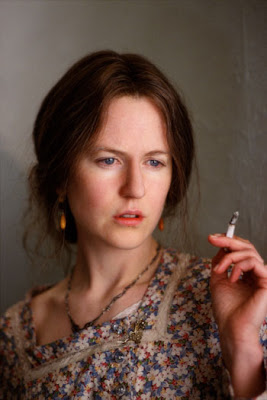 Virginia Woolf was deeply ambitious: "[O]ne of my vile vices is jealousy, of other writers' fame," she wrote in her diary. So, some part of her—the vain, competitive part—would love to know that she has made it to the big screen, complete with her long nose, in the new film adaptation of Michael Cunningham's Pulitzer-Prize-winning novel The Hours. Both novel and movie pay homage to Woolf's modernist masterpiece Mrs. Dalloway, about World War I's transformation of English society. The film has been widely acclaimed for its fidelity to the spirit of Woolf's work; Stephen Holden wrote in the New York Times, "All these brooding, complicated people are prototypical Woolfian figures blessed and afflicted with the same feverish imaginations, perplexing ambiguities."
Virginia Woolf was deeply ambitious: "[O]ne of my vile vices is jealousy, of other writers' fame," she wrote in her diary. So, some part of her—the vain, competitive part—would love to know that she has made it to the big screen, complete with her long nose, in the new film adaptation of Michael Cunningham's Pulitzer-Prize-winning novel The Hours. Both novel and movie pay homage to Woolf's modernist masterpiece Mrs. Dalloway, about World War I's transformation of English society. The film has been widely acclaimed for its fidelity to the spirit of Woolf's work; Stephen Holden wrote in the New York Times, "All these brooding, complicated people are prototypical Woolfian figures blessed and afflicted with the same feverish imaginations, perplexing ambiguities."
The problem is that Woolf would hate the movie, which depicts her as a jaw-clenched nut job and designates its neurotic latter-day protagonists her spiritual heirs. She certainly wouldn't award it many points for style: Woolf's extended, associative sentences spoke to the fragmentation of a civilization; when the film cuts between Julianne Moore cracking eggs in the 1950s and Meryl Streep loudly cracking eggs 50 years later, not much more is suggested than the enduring popularity of cooking. What would distress Woolf most, though, is the film's sentimentality about women and suffering and its suggestion that the abiding truth of Woolf's life and work was her madness.
The movie chronicles the lives of three women, all of whom are plagued by depression and an inability to get on with the chores or the servants or the party arrangements. There's Woolf herself, at the time of writing Mrs. Dalloway; Clarissa Vaughan, a contemporary version of Woolf's heroine Clarissa Dalloway; and Laura Brown, a housewife in Los Angeles in the 1950s. Near the opening of the film, we see each in bed, looking weary and pale. A minute in the sun, you feel, might permanently scar them.
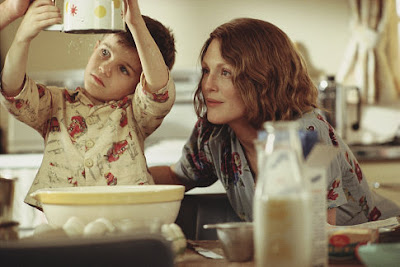 The film takes these characters' anomie and suicidal impulses as a given; this is a world in which all female melancholy is primal and contextless. Take the character of Laura Brown, the depressed housewife played by Julianne Moore. In Cunningham's novel, her unhappiness derives from her sense of social duty—she has married a local war hero in a patriotic contribution of her individual freedom. Brown spends her hours baking cakes instead of writing or painting, we understand, because she feels bound to community—to a world larger than her own destiny. In the movie, she seems simply to have been born in a funk.
The film takes these characters' anomie and suicidal impulses as a given; this is a world in which all female melancholy is primal and contextless. Take the character of Laura Brown, the depressed housewife played by Julianne Moore. In Cunningham's novel, her unhappiness derives from her sense of social duty—she has married a local war hero in a patriotic contribution of her individual freedom. Brown spends her hours baking cakes instead of writing or painting, we understand, because she feels bound to community—to a world larger than her own destiny. In the movie, she seems simply to have been born in a funk.
Consider the crucial scene in which Laura Brown retreats to a hotel room. In the book, she does so in order to read—and in her luxuriant privacy, she abstractly considers suicide, the way an upset child might threaten to run away from home. The movie turns this momentary retreat into the act of a terminally depressed woman: Brown deposits a teary, hysterical child at the baby sitter's and checks into a hotel in order to kill herself; while preparing to do so, she reads some of Mrs. Dalloway. The difference is profound; the movie sees Brown's relationship to Mrs. Dalloway not as an access to solitary independence, but as a suicide-enabler that, happily, fails.
 The contemporary character, Clarissa Vaughan (Meryl Streep), is the one we're supposed to relate to most. Like Clarissa Dalloway, her predecessor, she is haunted by an earlier love affair; hers was with Richard, the AIDS-stricken poet for whom she is throwing a party. But unlike Clarissa Dalloway, who exemplified Woolf's critique of a masculinist imperial British society that left women little room for unconventional decision-making, Vaughan's character speaks to no larger social problem. She is simply a psychiatrist's Playboy bunny: a wealthy New Yorker who has been able to make the kind of choices—Vaughan is a lesbian with an adopted daughter—that were never available to women like Dalloway. Vaughan is nonetheless so obsessed with the rhetoric of personal anxiety and of relating her bumps and bruises that she'll never realize she is mostly happy with her way of life. The movie—again, unlike the novel—sets us up to think that Clarissa's relationship with Sally is permanently compromised. And yet it ends as the two enjoy a Snow White kiss of renewal, delivered from the barren terrain of disappointment by the death of an innocent—a Christian message Woolf pointedly avoided in Mrs. Dalloway.
The contemporary character, Clarissa Vaughan (Meryl Streep), is the one we're supposed to relate to most. Like Clarissa Dalloway, her predecessor, she is haunted by an earlier love affair; hers was with Richard, the AIDS-stricken poet for whom she is throwing a party. But unlike Clarissa Dalloway, who exemplified Woolf's critique of a masculinist imperial British society that left women little room for unconventional decision-making, Vaughan's character speaks to no larger social problem. She is simply a psychiatrist's Playboy bunny: a wealthy New Yorker who has been able to make the kind of choices—Vaughan is a lesbian with an adopted daughter—that were never available to women like Dalloway. Vaughan is nonetheless so obsessed with the rhetoric of personal anxiety and of relating her bumps and bruises that she'll never realize she is mostly happy with her way of life. The movie—again, unlike the novel—sets us up to think that Clarissa's relationship with Sally is permanently compromised. And yet it ends as the two enjoy a Snow White kiss of renewal, delivered from the barren terrain of disappointment by the death of an innocent—a Christian message Woolf pointedly avoided in Mrs. Dalloway.
 Then there's Woolf herself: Because the movie begins with her suicide, then cuts to an earlier period, the Woolf sequences are inflected with a sense of her impending doom—with the inevitable gravity of that stone in her pocket. (No wonder her face is so long, you think.) Throughout, Kidman's Woolf seems as wired and hopped-up as someone who's spent too much time with Hunter S. Thompson—as if her internal life were a series of freeze-frame images as dire and apocalyptic as a bad acid trip. We watch her in a shapeless dress, scratching away at her novel; dazedly wandering the streets of a London suburb and whispering to herself; and dreamily running her hands over her writing pens, like a blind prophet looking for the truth in the faces of others. With the exception of a strong scene between Woolf and her husband, Leonard, arguing on a train platform, the film fails to show the wit, social engagement, or satiric acuity for which Woolf was known. It becomes, as the New York Times put it, an account of "the savage inner war waged by a brilliant mind against a system of faulty wiring that transmits a searing, crazy static into her brain." In other words, A Beautiful Mind for English majors.
Then there's Woolf herself: Because the movie begins with her suicide, then cuts to an earlier period, the Woolf sequences are inflected with a sense of her impending doom—with the inevitable gravity of that stone in her pocket. (No wonder her face is so long, you think.) Throughout, Kidman's Woolf seems as wired and hopped-up as someone who's spent too much time with Hunter S. Thompson—as if her internal life were a series of freeze-frame images as dire and apocalyptic as a bad acid trip. We watch her in a shapeless dress, scratching away at her novel; dazedly wandering the streets of a London suburb and whispering to herself; and dreamily running her hands over her writing pens, like a blind prophet looking for the truth in the faces of others. With the exception of a strong scene between Woolf and her husband, Leonard, arguing on a train platform, the film fails to show the wit, social engagement, or satiric acuity for which Woolf was known. It becomes, as the New York Times put it, an account of "the savage inner war waged by a brilliant mind against a system of faulty wiring that transmits a searing, crazy static into her brain." In other words, A Beautiful Mind for English majors.
However, Woolf killed herself 17 years after she wrote Mrs. Dalloway. During the period that she wrote the book—the one the movie concentrates on—her work was largely uninterrupted by bouts of extreme madness. Leonard was more of an enabler than the jail keeper he seems in the movie, and Woolf was as full of levity as she was of lethargy and coldness. She produced dozens of book reviews and, after finishing Dalloway, wrote several novels, including major works such as To the Lighthouse. A typical diary entry is full of the steadiness of work: "The day before, Thursday, I had to put semicolons to my Hen James article while talking to Ralph over my shoulder and then rush to catch a train to Hampstead to dine with Brett & Gertler." In fact, a close examination of Woolf's journals from this time suggests that some of her "breakdowns" were, in part, an excuse to retire from society in order to finish a novel or other work without paying the price exacted by society (or her own psyche) for willfully retreating from it: "It is always a question whether I wish to avoid these glooms. In part they … have a psychological interest which the usual state of … enjoying lacks," she wrote in 1926. There's no denying that Woolf was plagued by depression. But she was also, as Leonard Woolf put it, "always terribly sane in three-quarters of her mind."
 In the end, Mrs. Dalloway is not really about suicide, or madness: Although the suicide of a shell-shocked war veteran is the novel's most overtly dramatic scene, Woolf later considered taking this thread out altogether because she thought it didn't connect to the rest of the novel. Mrs. Dalloway is primarily a picture of a compromised society, of life in a city radically touched by war, in which Woolf reveals our everyday dishonesties by showing the unpleasant compromises made by others. The Hours, on the other hand, revels in death and sickness and refuses to face loss in its sternest form. It promotes the hoary notion that illness gives us depth: Death—Woolf's, or Richard's—helps us all to "value life more," as the Woolf character in the movie puts it. The artists are sacrificed so that the rest of us ordinary (but sensitive!) people can live better. How extremely fortunate for us.
In the end, Mrs. Dalloway is not really about suicide, or madness: Although the suicide of a shell-shocked war veteran is the novel's most overtly dramatic scene, Woolf later considered taking this thread out altogether because she thought it didn't connect to the rest of the novel. Mrs. Dalloway is primarily a picture of a compromised society, of life in a city radically touched by war, in which Woolf reveals our everyday dishonesties by showing the unpleasant compromises made by others. The Hours, on the other hand, revels in death and sickness and refuses to face loss in its sternest form. It promotes the hoary notion that illness gives us depth: Death—Woolf's, or Richard's—helps us all to "value life more," as the Woolf character in the movie puts it. The artists are sacrificed so that the rest of us ordinary (but sensitive!) people can live better. How extremely fortunate for us.
The Hours (Trailer, 2002)
The Hours based on the novel by Michael Cunningham. Film was directed by Stephen Daldry. The article below is about novel.
NEWYORK TIMES, BOOK REVIEW | November 22, 1998
Parallel Lives
A novel that echoes 'Mrs. Dalloway' features Virginia Woolf as a character.
By Michael Wood
'The Hours' by Michael Cunningham
 On a morning in June, a woman in her early 50's steps out into the bright, busy city that she loves. She needs to buy flowers for a party she is giving later in the day. She bumps into an old acquaintance, remembers moments from her earlier life. Along with a number of other people, she catches a glimpse of a celebrity, but isn't sure who it is. She buys the flowers, goes home and her day continues.
On a morning in June, a woman in her early 50's steps out into the bright, busy city that she loves. She needs to buy flowers for a party she is giving later in the day. She bumps into an old acquaintance, remembers moments from her earlier life. Along with a number of other people, she catches a glimpse of a celebrity, but isn't sure who it is. She buys the flowers, goes home and her day continues.
Where are we? We could, of course, be in any one of a number of days and cities, and the possibility itself is part of the answer to the question. But we are quite definitely, recognizably, in two novels: ''Mrs. Dalloway,'' by Virginia Woolf, and ''The Hours,'' by Michael Cunningham.
There are differences. The city is London in one case and New York in the other. The time is the 1920's; it is the 1990's. The unknown celebrity is a prince, a queen or a prime minister in a car; she is a movie star in a trailer. The woman in both novels is called Clarissa, but in the later work Mrs. Dalloway is a nickname. The chief difference, perhaps, is that no one in the first novel can have read the second, whereas almost everyone in the second seems to have read the first.
There are eerie consequences of this impression. When ''The Hours'' begins to repeat some of the darker events from ''Mrs. Dalloway,'' is this a literary parallel, a hint at the limitations of human plots and chances -- or a suggestion that the first novel has caused the events in the second? When someone dies quoting from Virginia Woolf's own suicide note, you think there must be even further options. What's clear is that the relationship between the two novels goes beyond allusion, and even beyond the modernist habit of borrowing previous literary structures, which T. S. Eliot called ''the mythical method.'' ''The Hours'' is haunted by ''Mrs. Dalloway'' -- appropriately, because its theme is the haunting of present lives by memories and books, by distant pasts and missed futures, by novels and poems to be read and written.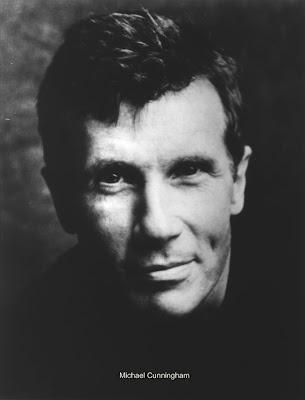
But so far I have described only one of Cunningham's story lines, and there are three. Their final intersection is a thing of such beauty and surprise that I can't reveal it here, but I can sketch out the lines before their meeting. After the New York Clarissa, we encounter a (fictional but entirely plausible) version of Woolf herself in 1923. She and her husband, Leonard, are living in Richmond, just outside London. The quiet is good for her health, but she longs to get back to the city. She is writing ''Mrs. Dalloway,'' at this point still called ''The Hours.'' Her sister, Vanessa, arrives with her children. Virginia slips away, almost takes a train to London, meets Leonard while she is waiting, goes home. Somewhere along the way, she decides that Clarissa Dalloway will not die in her novel; someone else will.
This story is told in seven episodes, interspersed with eight episodes of the New York day and with seven episodes evoking another time and place and person. A young woman called Laura Brown, pregnant for a second time, mother of a small boy, is married to an amiable veteran of World War II -- the date is 1949 -- and lives a slightly bewildered life in a suburb of Los Angeles. She has a moment of sudden, surprising sexual excitement with another woman and takes off into a little fugue rather like Woolf's projected one. She drives into the city, finds a room in a hotel and reads -- ''Mrs. Dalloway,'' of course. Then she goes home to her son and husband and a birthday celebration and sex. Goes home this time, the implication is.
Meanwhile, back in New York, Clarissa thinks about her party. It is for her friend Richard, an AIDS-stricken poet who is about to receive an award. Clarissa lives with her lover, Sally, and has for many years. An old gay friend drops by, aging, weeping. Clarissa's beautiful daughter, involved with an older woman whom Clarissa hates, also appears, apparently unfazed by the raging hostility between her friend and her mother. Clarissa visits Richard to see if he's ready for the party.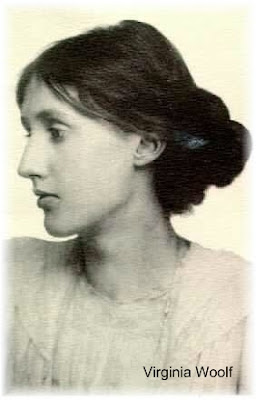
After a brief prologue, the stories alternate in an intricate sequence, rather like a rhyme scheme. The prologue recounts, mainly from Woolf's point of view, the writer's stepping into an English river to her death. The time of that event is 1941. I thought, until I was a good way into the book, that this beginning was a mistake: too heavy, quite apart from the stylistic risk. But what happens to Cunningham's characters fully justifies this move. He needs the shadow cast by Woolf's death, because it represents the condition under which we find whatever light there is. The whole book does sound a little fussy in description, an exercise in echoes, but it doesn't read that way. Do we need to know ''Mrs. Dalloway'' to get the gist of ''The Hours''? No, but ''need'' is perhaps not the right word.
We don't have to read ''Mrs. Dalloway'' before we can read ''The Hours,'' and no amount of pedantic comparison-hunting will help us understand it if we don't understand it already. But the connections between the two books, after the initial, perhaps overelaborate laying out of repetitions and divergences, are so rich and subtle and offbeat that not to read ''Mrs. Dalloway'' after we've read ''The Hours'' seems like a horrible denial of a readily available pleasure -- as if we were to leave a concert just when the variations were getting interesting.
Cunningham's two earlier novels, ''A Home at the End of the World'' and ''Flesh and Blood,'' are remarkable for the intensity with which their characters experience their own strangeness -- as if to be ordinary were an accomplishment, only rarely within reach. From such a perspective, Woolf's Mrs. Dalloway seems to be waiting, like an older sister: ''She always had the feeling that it was very, very dangerous to live even one day.''
There are times in ''The Hours'' when Cunningham follows Woolf's cadences too closely: ''Here she is then, Clarissa thinks''; ''Here, then, is the party.'' The effect is one of pastiche rather than of being haunted. There are moments too when the writing doesn't rise to its own challenges, merely gesturing toward the feelings on offer: ''She is sad for him, and strangely moved. She manages an ironic smile.'' But the overall impression is that of a delicate, triumphant glance, an acknowledgment of Woolf that takes her into Cunningham's own territory, a place of late-century danger but also of treasurable hours.
Here is a mother both understanding of and unnerved by her son's love for her: ''He knows. He must know. . . . He is devoted, entirely, to the observation and deciphering of her, because without her there is no world at all. . . . He will watch her forever. He will always know when something is wrong. He will always know precisely when and how much she has failed.'' It is only on reflection that we realize that the mother's fear is also a legacy, a gift to the child, something he will always know. But reflection is where many of our chances for happiness lie, in the memory not of what happened but of what was promised.
''It had seemed like the beginning of happiness,'' the New York Clarissa thinks of her early relationship with Richard, ''and Clarissa is still sometimes shocked, more than 30 years later, to realize that it was happiness. . . . There is still that singular perfection, and it's perfect in part because it seemed, at the time, so clearly to promise more. Now she knows: That was the moment, right then. There has been no other.''
Friday, September 21, 2007
Gulliver's Travels (1939 full movie)
Novel
Gulliver's Travels (1726, amended 1735), officially Travels into Several Remote Nations of the World, in Four Parts. By Lemuel Gulliver, First a Surgeon, and then a Captain of several Ships, is a novel by Jonathan Swift that is both a satire on human nature and a parody of the "travellers' tales" literary sub-genre. It is Swift's best known and most esteemed work, and a classic of English literature.
The book became tremendously popular as soon as it was published (Alexander Pope stated that "it is universally read, from the cabinet council to the nursery"), and it is likely that it has never been out of print since then.
Cultural influences
The popularity of Gulliver is such that the term "Lilliputian" has entered many languages as an adjective meaning "small and delicate". There is even a brand of cigar called Lilliput which is, obviously, small. In addition to this there are a series of collectable model-houses known as "Lilliput Lane".
In like vein, the term "Yahoo" is often encountered as a synonym for ruffian or thug. "Brobdingnagian" appears in the Oxford English Dictionary as a synonym for 'very large' or 'gigantic'.
In the discipline of computer architecture, the terms big-endian and little-endian are used to describe two possible ways of laying out bytes in memory; see Endianness. One of the conflicts in the book is between Lilliputians who preferred cracking open their soft-boiled eggs from the little end, and Blefuscans who preferred the big end.
Allusions and references from other works
In Ray Bradbury's Fahrenheit 451, the main character, Guy Montag, reads aloud a quotation from Gulliver's Travels. In the dystopian setting of Bradbury's novel, all books have been banned. The specific quotation - "It is computed that eleven thousand persons have at several times suffered death rather than submit to break their eggs at the smaller end" - illustrates the novel's theme of nonconformity.
Science fiction writer Robert A. Heinlein made his own comment by inverting the scenario in Starman Jones, where a stray spaceship lands on a planet where carnivorous horse-like creatures dominate all other fauna, including human-like creatures resembling Swift's Yahoos. Some readers consider these "horses" the story's clear villains; they not only butcher and eat humans (local and extraplanetary alike), but also practice euthanasia of old and weak members of their own species. Much of the plot is devoted to the Earth humans courageously fighting them.
In Alan Moore's two comic books The League of Extraordinary Gentlemen, Gulliver was the unofficial leader of an early incarnation of the League, alongside various others including The Scarlet Pimpernel, Dr. Syn and Fanny Hill.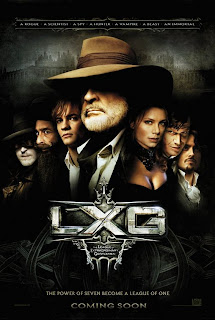
Laputa inspired Isaac Asimov's story "Shah Guido G.", in which a future Earth is groaning under the tyranny of a flying city [1].
The Japanese animated film Castle in the Sky features a flying island called Laputa. Hayao Miyazaki has stated the name comes from Swift's book.
In the Stanley Kubrick film Dr. Strangelove or: How I Learned to Stop Worrying and Love the Bomb, one of the B-52 bomber's target in Russia is a missile complex at 'Laputa'.
Laputa influenced L. Frank Baum's Isle of Phreex in John Dough and the Cherub and his Sky Island.
In the Nintendo game by Shigesato Itoi, MOTHER 2 (EarthBound in the US), the second "Your Santuary" is named Lilliput Steps. It is a series of extremely tiny footprints. Also, the first "Your Santuary" is named Giant Step, featuring a single huge footprint; it may be a reference to Brobdingnag's giants.
In Kingdom Hearts II at the Timeless River, a small area is called Lilliput, which is a very miniature town.
German composer Georg Philipp Telemann wrote a suite for two violins, the "Gulliver Suite." The five movements are "Intrada," "Chaconne of the Lilliputians," "Gigue of the Brobdingngians," "Daydreams of the Laputians and their attendant flappers," and "Loure of the well-mannered Houyhnhnms & Wild dance of the untamed Yahoos." Telemann wrote his suite in 1728, only two years after the publication of Swift's novel.
The Hungarian writer Frigyes Karinthy (1887-1938) wrote two novels in which a 20th-century Gulliver visits imaginary lands. One, Utazás Faremidóba (i.e. Voyage to Faremido), recounts a trip to a land with almost robot-like, metallic beings whose lives are ruled by science, not emotion, and who communicate through a language based on musical notes. The second, Capillaria, is a satirical comment on male-female relationships. It involves a trip by Gulliver to a world where all the intelligent beings are female, males being reduced to nothing more than their reproductive function.
Kazohinia is written by Sándor Szathmári, another Hungarian writer. Szathmári regarded Karinthy as his “spiritual father”. Kazohinia and Voyage to Faremido show many similarities: both describe beings that are not only capable to understand the secrets of Nature, but are manifestations of Nature themselves.
The novel The Return of the Antelope (by Willis Hall and Rowan Barnes-Murphy) and its sequel The Antelope Company at Large centre around the adventures of three Liliputian sailors shipwrecked in England. Return of the Antelope was subsequently made into a TV series by Granada Television.
The novel Mistress Masham's Repose by T. H. White features descendants of Liliputians that were captured and brought to England.
The comic book series Fables has a city called "Smalltown" which was founded by exiled Lilliputian soldiers. All small Fables (not just Lilliputians) have a tendency to refer to normal-sized people as "gullivers" or as being "gulliver-sized".
The character of Gulliver appears in the Doctor Who story The Mind Robber, played by Bernard Horsfall.
A parody of Gulliver occurs when Ben Stiller's character in Night at the Museum is tied down with ropes in the same style as Gulliver by 3 inch tall westerners.
Another parody of Gulliver occurs in Death Cab for Cutie's music video for their song Crooked Teeth, in which the main singer is tied down with ropes by small figures.
In the film Army of Darkness, a parody of the Lilliput scene when protagonist Ash Williams is tied down by miniature demons.
Sylvia Plath's 1962 poem "Gulliver" makes an allusion to the tale.
"A Voyage to Lilliput" was adapted for inclusion in Andrew Lang's Blue Fairy Book.
Davy King's 1978 short story "The Woman Gulliver Left Behind" is a sort of satirical feminist spin on the tale, telling it from the point of view of Gulliver's wife.
In John Myers Myers novel Silverlock, the protagonist, A. Clarence Shandon, encounters the Houyhnhnms and is dismissed by them as a Yahoo.
Larry Niven's Known Space ARM stories feature a character from a club of elderly people devoted to longevity called the Struldbrugs Club.
Soviet Ukrainian science fiction writer Vladimir Savchenko published Gulliver's Fifth Travel - The Travel of Lemuel Gulliver, First a Surgeon, and Then a Captain of Several Ships to the Land of Tikitaks (Russian: Пятое путешествие Гулливера - Путешествие Лемюэля Гулливера, сначала хирурга, а потом капитана нескольких кораблей, в страну тикитаков) - a sequel to the original series in which Gulliver's role as a surgeon is more apparent. Tikitaks are people who inject the juice of a unique fruit to make their skin transparent, as they consider people with regular opaque skin secretive and ugly.
Film, TV or theatrical adaptations
Gulliver's Travels has been adapted several times for film and television:
* Le Voyage de Gulliver à Lilliput et chez les géants (1902): A French short silent adaptation directed by Georges Méliès.
* The New Gulliver (1935): Russian film by Aleksandr Ptushko about a Soviet schoolboy who dreams about ending up in Lilliput. Notable for its intricate puppetry and a decidedly strange twisting of Swift's tale in favor of Communist ideas. This was the first film to contain stop motion animation in nearly its entire running time.
* Gulliver's Travels (1939): animated feature produced by Fleischer Studios and Paramount Pictures as a response to the success of Disney's Snow White and the Seven Dwarfs, directed by Dave Fleischer. The film is generally considered one of the best from The Golden Age of Hollywood animation, although it varies widely from the original novel. Fleischer used the rotoscope to animate the character of Gulliver, tracing from footage of a live actor. The film was a moderate success, and its Lilliputian characters appeared in their own cartoon short subjects. With the expiration of its copyright, this film has entered the public domain, and can be downloaded at no charge from the Prelinger Archive. [3]
* The 3 Worlds of Gulliver (1960): The first live action adaptation of Gulliver's Travels, but also incorporating the stop motion animation of Ray Harryhausen. It was directed by Jack Sher and starred Kerwin Mathews.
* The Adventures of Gulliver (1968): This animated series was directed by William Hanna and Joseph Barbera. Young Gary Gulliver, voiced by Jerry Dexter, searches for his missing father in the land of Lilliput.
* Gulliver's Travels (1977): Live action/animated musical film directed by Peter R. Hunt and starring Richard Harris featuring the Lilliput voyage only.
* Gulliver's Travels (1979) : Animated cartoon made in Australia that was seen on Famous Classic Tales on CBS. It starred Ross Martin as Lemuel Gulliver and features two voyages.
* Gulliver's Travels (1992): Animated television series starring the voice of Terrence Scammell.
* Gulliver's Travels (1996): Live-action television mini-series starring Ted Danson and Mary Steenburgen. In this version Dr. Gulliver has returned to his family from a long absence. The action shifts back and forth between flashbacks of his travels and the present where he is telling the story of his travel and has been committed to an asylum. It is notable for being one of the very few adaptations to feature all four voyages, and is considered the closest adaptation to the book, despite taking several liberties.
* Arpudha Theevu (2007) Tamil Movie based upon Gulliver's Travels, features Prithviraj and Mallika Kapoor in the prominent roles besides 300 dwarfs all through the movie.
The adaptation in 1939 (which is above)
 Gulliver's Travels is a 1939 cel-animated Technicolor feature film, directed by Dave Fleischer and produced by Max Fleischer for Fleischer Studios. The film was released during the holiday season of 1939 by Paramount Pictures, who had the feature produced as an answer to the success of Walt Disney's huge box-office hit Snow White and the Seven Dwarfs.
Gulliver's Travels is a 1939 cel-animated Technicolor feature film, directed by Dave Fleischer and produced by Max Fleischer for Fleischer Studios. The film was released during the holiday season of 1939 by Paramount Pictures, who had the feature produced as an answer to the success of Walt Disney's huge box-office hit Snow White and the Seven Dwarfs.
Gulliver was the tenth animated feature film ever released, and the first produced by an American studio other than Walt Disney Productions. The story is based upon the Lilliputian adventures of Gulliver depicted in Jonathan Swift's 18th century novel Gulliver's Travels.
History
Max and Dave Fleischer had no intentions of producing a full-length feature film until Paramount, who distributed Fleischer's Popeye, Betty Boop, and Screen Songs cartoon shorts, approached him with the idea. Paramount offered to build the New York City-based Fleischers a new state-of-the-art animation studio in Miami Beach, Florida, away from the union influence which had polarized the Fleischer Studio after a bitter 1937 labor strike. The Fleischers agreed, and began development on Gulliver's Travels in spring 1938 as construction began on the Miami studio. The Miami Fleischer Studio opened in fall 1938, and the Fleischer staff moved their production headquarters there. A few individuals, including voice actor Mae Questel, opted to remain in New York and did not follow the Fleischers to Miami.
Paramount wanted Gulliver ready for a Christmas 1939 release, meaning that the film would have to be produced on a timetable that was one-third of that for the production of Disney's Snow White. To meet this deadline, the Fleischer staff was greatly expanded, to the point that the once-spacious new building was overcrowded with employees. Local Miami art schools provided graduates to be trained as ink-and-paint artists and inbetweeners. Animators were lured from the Hollywood animation studios, including Cal Howard and Tedd Pierce from the Schlesinger studio, and former Fleischer employees Grim Natwick, Al Eugster, and James Culhane, who had all migrated over to the Disney studio. Factions developed between the East and West Coast animators, who were unaccustomed to each-others' habits. The two sides grew further apart after Howard, Pierce, and the other Hollywood storymen decided to discard the New York regime's storyboards, crafting the film's plot over again from scratch.
Rotoscoping, an animation technique originally developed by the Fleischer Studios, was used throughout Gulliver's Travels to animate Gulliver. The process involves tracing live-action footage frame-by-frame; Sam Parker, the actor who performed the voice of Gulliver, also modeled as the character's live-action reference. Popeye the Sailor had originally been planned to "portray" Gulliver, but these plans were scrapped during pre-production.
Songs in the film include "All's Well", "It's a Hap-Hap-Happy Day", and "Faithful Forever", all of which later became standards of Fleischer cartoon scores. The film was spun off into two short-lived Fleischer cartoon short series: the Gabby cartoons starring the Pinto Colvig-voiced Lilliputian sidekick of the film, and the Sneak, Snoop and Snitch (Animated Antics) cartoons starring the three villains from the film.
Like Snow White before it, Gulliver was a box-office success, and led to the production of another Fleischer/Paramount feature, Mister Bug Goes to Town. However, business-related problems which arose during the production of Mister Bug would result in Paramount's absorption of the Fleischer Studio in 1941. Gulliver's Travels is now in the public domain, and is widely available on home video and DVD.
References
* Barrier, Michael (1999). Hollywood Cartoons: American Animation in Its Golden Age. Oxford: Oxford University Press. ISBN 0-19-516729-5.
* Maltin, Leonard (1980, updated 1987). Of Mice and Magic: A History of American Animated Cartoons. New York: Penguin Books. ISBN 0-452-25993-2.
From Wikipedia
http://en.wikipedia.org/wiki/Gulliver's_Travels
http://en.wikipedia.org/wiki/Gulliver%27s_Travels_%281939_film%29
Tuesday, September 18, 2007
How the movies mangle Hemingway. (By David Haglund - Slate Magazine)

Hollywood Hemingway
In a story in The Martian Chronicles, Ray Bradbury imagines a future in which books are banned and the only movies allowed are adaptations of Ernest Hemingway. "My God," one character screams, "how many times have I seen For Whom the Bell Tolls done! Thirty different versions. All realistic. Oh, realism! Oh, here, oh, now, oh hell!"
Those wishing to understand that anguish now have a field guide: The Ernest Hemingway Collection, just out from 20th Century Fox. It doesn't include the film that seems to have inspired Bradbury's prophecy—1943's For Whom the Bell Tolls, a three-hour slog of bad makeup and snowy-mountain shootouts that was nominated for nine academy awards (winning one). But four of the five films in the collection follow the template it set: The Snows of Kilimanjaro, The Sun Also Rises, A Farewell to Arms, and Hemingway's Adventures of a Young Man. (Also included is Under My Skin, an uneven, black-and-white melodrama from 1950 based on the short story "My Old Man.") These are prime examples of a peculiar subgenre one might call Hollywood Hemingway: widescreen, Technicolor adaptations featuring foreign settings and doomed love, and always at least half an hour too long. Mostly products of the 1950s, they were made when Hemingway was a living legend and motion picture executives—thanks to the collapse of the studio system and the new ubiquity of television—were deeply insecure.
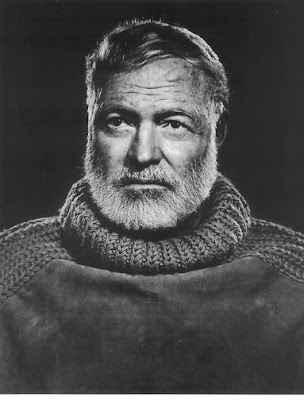 And so, with an eye toward glamour and prestige, they turned to the legend of Papa: traveler, soldier, hunter, lover. The first rule of Hollywood Hemingway is that the star must play an obvious stand-in for Hemingway himself. Adventures of a Young Man takes this the furthest, splashing its title across an oil-painted version of the famous Hemingway portrait by Yousuf Karsh; the protagonist's name may be "Nick Adams," but we're meant to recognize that he's really Ernest Hemingway. In that movie, Richard Beymer, fresh from playing Tony in West Side Story, does a competent Nick/Ernest, taking us from the character's Midwestern adolescence to his heroic performance as an ambulance driver in Italy.
And so, with an eye toward glamour and prestige, they turned to the legend of Papa: traveler, soldier, hunter, lover. The first rule of Hollywood Hemingway is that the star must play an obvious stand-in for Hemingway himself. Adventures of a Young Man takes this the furthest, splashing its title across an oil-painted version of the famous Hemingway portrait by Yousuf Karsh; the protagonist's name may be "Nick Adams," but we're meant to recognize that he's really Ernest Hemingway. In that movie, Richard Beymer, fresh from playing Tony in West Side Story, does a competent Nick/Ernest, taking us from the character's Midwestern adolescence to his heroic performance as an ambulance driver in Italy.
Those charged with playing the adult Hemingway have a tougher time. In The Snows of Kilimanjaro, the preternaturally reticent Gregory Peck struggles to express the passionate egotism of Hemingway stand-in Harry Street; he looks especially silly—and surprisingly boyish—tracking big game. (Orson Welles might have done wonders with the role: Snows is basically Citizen Kane on Safari.) Those hunting scenes aren't incidental, either: The genre requires at least one exotic locale and many dramatic landscape shots. In the days before the Discovery Channel, the footage wowed critics as well as audiences. Reviewing Snows in the Times, the famously conventional Bosley Crowther crowed that "the close-up of a swimming herd of hippopotamuses is the best one of game we've ever seen."
Hemingway told Ava Gardner, who plays—wonderfully—Harry Street's doomed lover, that the only things he liked in the movie were her and the hyena. Which may be the shrewdest thing he ever said about the movies—and not just because they are, in fact, the two best things in the film (Bernard Hermann's typically excellent score deserves a mention, too).
As a critic, Hemingway adhered to a strangely superficial notion of "realism"—he was delighted, for example, when an actual Swedish boxer was cast in a TV version of his story "The Killers," in the role of the Swedish boxer. And he hoped that the great neorealist Vittorio De Sica would adapt The Old Man and the Sea in the style of Bicycle Thieves, using nonprofessional actors. According to his son Patrick, "pictures on the silver screen were nothing but pure illusion to Hemingway and not to be taken seriously." (Movie stars were, apparently, another matter.)
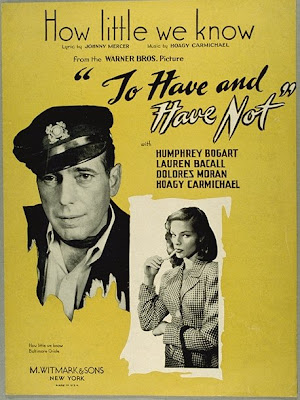 But the best Hemingway adaptations—sadly, not included in The Ernest Hemingway Collection—are those that embrace the artifice of filmmaking, rather than wishing it away. The most famous example is To Have and Have Not (1944), which the great director Howard Hawks thought he and Hemingway might make together. When Hemingway predictably declined, Hawks supposedly said, "I'll get Faulkner to do it; he can write better than you can anyway." William Faulkner did do it, and he and his co-writer, Jules Furthman, drew almost entirely from the first chapter of Hemingway's novel (and borrowed liberally from Casablanca as well). With their sharp, stylish dialogue, and the dark interiors and foggy nautical scenes captured by Hawks, the movie at least approaches the existential spirit of Hemingway's fiction—unlike the more superficially faithful adaptations from the 1950s.
But the best Hemingway adaptations—sadly, not included in The Ernest Hemingway Collection—are those that embrace the artifice of filmmaking, rather than wishing it away. The most famous example is To Have and Have Not (1944), which the great director Howard Hawks thought he and Hemingway might make together. When Hemingway predictably declined, Hawks supposedly said, "I'll get Faulkner to do it; he can write better than you can anyway." William Faulkner did do it, and he and his co-writer, Jules Furthman, drew almost entirely from the first chapter of Hemingway's novel (and borrowed liberally from Casablanca as well). With their sharp, stylish dialogue, and the dark interiors and foggy nautical scenes captured by Hawks, the movie at least approaches the existential spirit of Hemingway's fiction—unlike the more superficially faithful adaptations from the 1950s.
The only Hollywood film to really capture that spirit, though, is Robert Siodmak's The Killers (1946). The first 10 minutes adapt Hemingway's story of the same name with remarkable fidelity, right down to the clipped, tough-guy dialogue:
"What's it all about?"
"Hey, Al, bright boy wants to know what it's all about."
"Why don't you tell him?"
"What do you think it's all about?"
"I don't know."
"What do you think?"
"I wouldn't say."
Hemingway's dialogue is less naturalistic than it is poetic, and when it shows up verbatim (very occasionally) in The Ernest Hemingway Collection, it usually sounds preposterous. For The Killers, however, Siodmak crafted a chiaroscuro world suited to such aggressive, monosyllabic exchanges. His movie is not Hollywood Hemingway at all, but a classic example of a more famous genre: film noir. (To Have and Have Not has shades of film noir as well, and Hawks followed it with a noir classic, The Big Sleep.)
"The Killers" is a Nick Adams story, but Nick, the classic Hemingway stand-in, runs off early in the film, and the lead is taken over by a hard-boiled insurance investigator played by Edmond O'Brien, doing his best Humphrey Bogart. It's as though one is watching the transition from Hemingway's sensibility—tortured, macho, Romantic—to the ethos of cool that was just then taking hold in America. And it's mostly a relief: Those Hemingway men, all self-dramatization and inner melodrama, were a bit much to take. But something is lost as well: the anguished idealism, the (comparatively) frank emotional engagement. Watching the affectless O'Brien return to his insurance office at the end of the movie, I almost began to miss the awkward enthusiasm of Gregory Peck, boyishly chasing hippopotami.
Monday, September 17, 2007
A Farewell to Arms, 1932 (full movie)
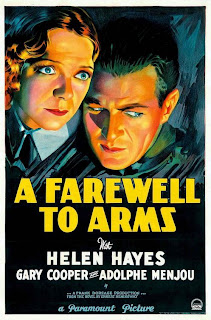 Based on the novel by Ernest Hemingway in 1932. The film was nominated for the Academy Award for Best Picture. It was written by Oliver H.P. Garrett and Benjamin Glazer, from the Hemingway novel, was directed by Frank Borzage, and features the music of Richard Wagner. The movie stars Helen Hayes, Gary Cooper and Adolphe Menjou.
Based on the novel by Ernest Hemingway in 1932. The film was nominated for the Academy Award for Best Picture. It was written by Oliver H.P. Garrett and Benjamin Glazer, from the Hemingway novel, was directed by Frank Borzage, and features the music of Richard Wagner. The movie stars Helen Hayes, Gary Cooper and Adolphe Menjou.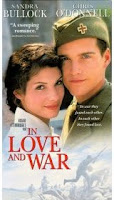 The film was remade with the same title in 1957, starring Jennifer Jones, Rock Hudson and Vittorio De Sica and was directed by Charles Vidor and John Huston. De Sica was nominated for Best Supporting Actor for his role in this version.
The film was remade with the same title in 1957, starring Jennifer Jones, Rock Hudson and Vittorio De Sica and was directed by Charles Vidor and John Huston. De Sica was nominated for Best Supporting Actor for his role in this version. Sunday, September 16, 2007
Film Adaptation
Adaptation introduces complications in audience perception and aesthetics. The most obvious and common form of film adaptation is the use of a novel as the basis of a film, but film adaptation includes the use of non-fiction (including journalism), autobiography, comic book, scripture, plays, and even other films. From the earliest days of cinema, adaptation has been nearly as common as the development of original screenplays.
Novel adaptations and fidelity
Novels are frequently adapted for films. For the most part, these adaptations attempt either to appeal to an existing commercial audience (the adaptation of best sellers and the "prestige" adaptation of works) or to tap into the innovation and novelty of a less well known author. Inevitably, the question of "faithfulness" arises, and the more high profile the source novel, the more insistent are the questions of fidelity.
Elision and interpolation
 Erich von Stroheim attempted a literal adaptation of Frank Norris's novel McTeague in 1924 with his film, Greed. The resulting film was over sixteen hours long. A cut of the film only eight hours long, then one running to four hours, appeared. Finally, the studio itself cut the film to around two hours, resulting in a finished product that was entirely incoherent. Since that time, few directors have been foolish enough to attempt to put everything in a novel into a film. Therefore, elision is nearly mandatory.
Erich von Stroheim attempted a literal adaptation of Frank Norris's novel McTeague in 1924 with his film, Greed. The resulting film was over sixteen hours long. A cut of the film only eight hours long, then one running to four hours, appeared. Finally, the studio itself cut the film to around two hours, resulting in a finished product that was entirely incoherent. Since that time, few directors have been foolish enough to attempt to put everything in a novel into a film. Therefore, elision is nearly mandatory.
In some cases, however, film adaptations will also interpolate scenes or invent characters. This is especially true when a novel is part of a literary saga. Incidents or quotes from later or earlier novels will be inserted into a single film. Additionally, and far more controversially, film makers will invent new characters or create stories that were not present in the source material at all. Given the anticipated audience for a film, the screenwriter, director, or movie studio may wish to increase character time or invent new characters. For example, William Kennedy's Pulitzer Prize winning novel, Ironweed, had a very small section with a prostitute named Helen. Because the movie studio anticipated a female audience for the film and had Meryl Streep for the role, Helen became a significant part of the film. However, characters are also sometimes invented to provide the narrative voice.
Given the anticipated audience for a film, the screenwriter, director, or movie studio may wish to increase character time or invent new characters. For example, William Kennedy's Pulitzer Prize winning novel, Ironweed, had a very small section with a prostitute named Helen. Because the movie studio anticipated a female audience for the film and had Meryl Streep for the role, Helen became a significant part of the film. However, characters are also sometimes invented to provide the narrative voice.
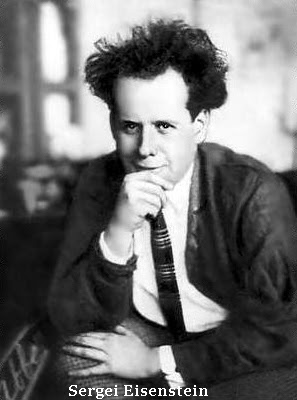 As Sergei Eisenstein pointed out in his landmark essay on Charles Dickens ("Dickens, Griffith, and the Film Today", Film Form), films most readily adapt novels with externalities and physical description: they fare poorly when they attempt the Modern novel and any fiction that has internal monologue or, worse, stream of consciousness. When source novels have exposition or digressions from the author's own voice, a film adaptation may create a commenting, chorus-like character to provide what could not be filmed otherwise. Thus, in the adaptation of John Fowles's The French Lieutenant's Woman, the director created a contemporary Englishman in a romance with a woman to offer up the ironic and scholarly voice that Fowles provided in the novel, and the film version of Laurence Sterne's "unfilmable" novel, Tristram Shandy had the main actor speak in his own voice, as an actor, to emulate the narrator's ironic and metafictional voice in the novel. Early on, film makers would rely upon voice over for a main character's thoughts, but, while some films (e.g. Blade Runner) may self-consciously invoke the older era of film by the use of voice over, such devices have been used less and less with time.
As Sergei Eisenstein pointed out in his landmark essay on Charles Dickens ("Dickens, Griffith, and the Film Today", Film Form), films most readily adapt novels with externalities and physical description: they fare poorly when they attempt the Modern novel and any fiction that has internal monologue or, worse, stream of consciousness. When source novels have exposition or digressions from the author's own voice, a film adaptation may create a commenting, chorus-like character to provide what could not be filmed otherwise. Thus, in the adaptation of John Fowles's The French Lieutenant's Woman, the director created a contemporary Englishman in a romance with a woman to offer up the ironic and scholarly voice that Fowles provided in the novel, and the film version of Laurence Sterne's "unfilmable" novel, Tristram Shandy had the main actor speak in his own voice, as an actor, to emulate the narrator's ironic and metafictional voice in the novel. Early on, film makers would rely upon voice over for a main character's thoughts, but, while some films (e.g. Blade Runner) may self-consciously invoke the older era of film by the use of voice over, such devices have been used less and less with time.
There have been several nominees for non plus ultra of inventive adaptation, including the Roland Joffe adaptation of The Scarlet Letter with explicit sex between Hester Prynn and the minister and Native American attacks on Salem (changes introduced, according to Joffe, to increase the market and to make an entirely new morality tale out of the novel). At nearly the same time, Daniel Defoe's Moll Flanders was creatively adapted to make it a romance. A television mini-series of Gulliver's Travels changed the sexes of characters, made some vanish, and changed the character of Master Bates from a single 3 sentence obscene pun into a villain. The Charlie Kaufman and "Donald Kaufman" penned Adaptation was an intentional satire and commentary on the process of film adaptation itself. All of these cases of "outrageous" or "unfaithful" adaptation were interpretations of the source work. Joffe argued that his changes were a recasting and revitalizing of Hawthorne's point. The creators of the Gulliver miniseries interpolated a sanity trial to reflect the ongoing scholarly debate over whether or not Gulliver himself is sane at the conclusion of Book IV. In these cases, adaptation is a form of criticism and recreation, as well as translation.
Change in adaptation is essential and practically unavoidable, mandated both by the constraints of time and medium, but how much is always a balance. Some film theorists have argued that a director should be entirely unconcerned with the source, as a novel is a novel, while a film is a film, and the two works of art must be seen as separate entities. Since a transcription of a novel into film is impossible, even holding up a goal of "accuracy" is absurd. Others argue that what a film adaptation does is change to fit (literally, adapt), and the film must be accurate to either the effect (aesthetics) of a novel or the theme of the novel or the message of the novel and that the film maker must introduce changes where necessary to fit the demands of time and to maximize faithfulness along one of these axes.
Theatrical adaptation
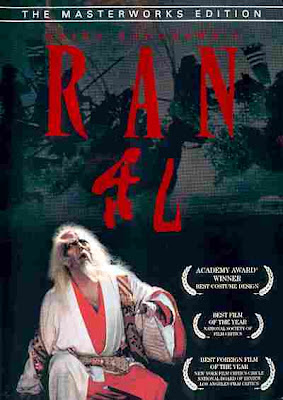 In addition to adaptation from novels, films frequently use plays as their sources. William Shakespeare has been called the most popular screenwriter in Hollywood. Not only are there film versions of all of Shakespeare's plays, but there are multiple versions of many of them, and there are films adapted from Shakespeare's plays very loosely (such as West Side Story, Kiss Me Kate, O, and 10 Things I Hate about You, as well as Akira Kurosawa's adaptations in Throne of Blood and Ran). Similarly, hit Broadway plays are frequently adapted, whether from musicals or dramas. On the one hand, theatrical adaptation does not involve as many interpolations or elisions as novel adaptation, but, on the other, the demands of scenery and possibilities of motion frequently entail changes from one medium to the other. Film critics will often mention if an adapted play has a static camera or emulates a proscenium arch. Laurence Olivier consciously imitated the arch with his Henry V (1944), having the camera begin to move and to use color stock after the prologue, indicating the passage from physical to imaginative space. Sometimes, the adaptive process can continue after one translation. Mel Brooks's The Producers was a film that was adapted into a Broadway musical and then adapted again into a film.
In addition to adaptation from novels, films frequently use plays as their sources. William Shakespeare has been called the most popular screenwriter in Hollywood. Not only are there film versions of all of Shakespeare's plays, but there are multiple versions of many of them, and there are films adapted from Shakespeare's plays very loosely (such as West Side Story, Kiss Me Kate, O, and 10 Things I Hate about You, as well as Akira Kurosawa's adaptations in Throne of Blood and Ran). Similarly, hit Broadway plays are frequently adapted, whether from musicals or dramas. On the one hand, theatrical adaptation does not involve as many interpolations or elisions as novel adaptation, but, on the other, the demands of scenery and possibilities of motion frequently entail changes from one medium to the other. Film critics will often mention if an adapted play has a static camera or emulates a proscenium arch. Laurence Olivier consciously imitated the arch with his Henry V (1944), having the camera begin to move and to use color stock after the prologue, indicating the passage from physical to imaginative space. Sometimes, the adaptive process can continue after one translation. Mel Brooks's The Producers was a film that was adapted into a Broadway musical and then adapted again into a film.
Television and other theatrical adaptation
Feature films are occasionally created as a full and (usually) uncensored version of a television series or television segments. In these cases, the film will either offer a longer storyline than the usual television program's format or will offer a greater set of production values. In the adaptation of The X Files to film, for example, greater effects and a longer plotline were involved. Additionally, adaptations of television shows will offer the viewer the opportunity to see the television show's characters without broadcast restrictions. These additions (nudity, profanity, explicit drug use, explicit violence) are only rarely a featured adaptive addition (film versions of "procedurals" such as Miami Vice are most inclined to such additions as featured adaptations). Because the film makers are adapting established characters with expected behaviors, introducing obviously non-broadcast elements may alienate a core audience, and therefore nudity, drug use, and violence for the main characters may be increased from broadcast standards, but they are unlikely to be a significant film element. Instead, films will try to offer a "real" story, as if commercial television were inherently censored for complexity. Some adaptations of television shows are nostalgic and usually ironic. Films about television shows of the audience's childhood (e.g. Scooby-Doo) play up television conventions and will sometimes exploit the distinction between movie and television possibilities for comedic effect.
At the same time, some theatrically released films are adaptations of television mini-series events. When national film boards and state controlled television networks co-exist, film makers can sometimes create very long films for television that they may adapt solely for time for theatrical release. Both Ingmar Bergman (notably with Fanny and Alexander, but with other films as well) and Lars von Trier have created long television films that they then recut for international distribution.
Even segments of television shows have been adapted into feature films. The American television variety show Saturday Night Live has been the origin of a number of films, beginning with The Blues Brothers, which began as a one-off performance by Dan Aykroyd and John Belushi. The most recent of these Saturday Night Live originated films is a case of double television origin: Fat Albert, which began with an impression of another television show based on the comedy routine of Bill Cosby. Rowan Atkinson has starred in three British films that originated on television: Mr. Bean, Johnny English, and Mr. Bean's Holiday.
Radio narratives have also provided the basis of film adaptation. The Hitchhiker's Guide to the Galaxy, for example, began as a radio series for the BBC and then became a novel which was adapted to film. In the heyday of radio, radio segments, like television segments today, translated to film on several occasions, usually as shorts. Dialog-heavy stories and fantastic stories from radio also adapted to film (e.g. Fibber McGee, Life with Father and Superman, which was a serial on radio before being adapted to film).
Comic book characters, particularly superheroes, have long been adapted into film, beginning in the 1940s with Saturday movie serials aimed at children. Superman (1978) and Batman (1989) are two later successful movie adaptations of famous comic book characters. In the early 2000s, blockbusters such as X-Men (2000) and Spider-Man (2002) ) have led to dozens of superhero films. The success of these films has also led to other comic books not necessarily about superheroes being adapted for the big screen, such as Ghost World (2001), American Splendor (2003) and Sin City (2005).
The adaptation process for comics is different from that of novels. Many successful comic book series last for several decades and have featured several variations of the characters in that time. Films based on such series usually try to capture the back story and “spirit” of the character instead of adapting a particular storyline. Occasionally aspects of the characters and their origins are simplified or modernized.
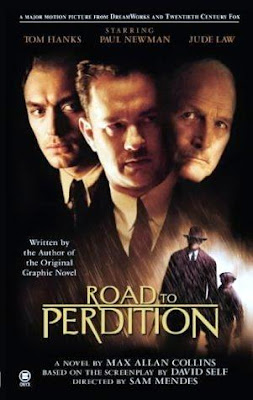 Self-contained graphic novels, many of which do not feature superheroes, can be adapted more directly, such as in the case of Road to Perdition (2002) and V for Vendetta (2006). In particular, Robert Rodriguez did not use a screenplay for Sin City but utilized actual panels from writer/artist Frank Miller's series as storyboards to create what Rodriguez regards as a "translation" rather than an adaptation.
Self-contained graphic novels, many of which do not feature superheroes, can be adapted more directly, such as in the case of Road to Perdition (2002) and V for Vendetta (2006). In particular, Robert Rodriguez did not use a screenplay for Sin City but utilized actual panels from writer/artist Frank Miller's series as storyboards to create what Rodriguez regards as a "translation" rather than an adaptation.
Furthermore, some films based on long-running franchises use particular storylines from the franchise as a basis for a plot. The second X-Men film was loosely based on the graphic novel X-Men: God Loves, Man Kills and the third film on the storyline Dark Phoenix Saga.
Adaptations from other sources
Documentary films have been made from reportage, as have dramatic films (e.g. All the President's Men, and, most recently, Miracle (film), which was adapted from a deadline written book after the 1980 "miracle on ice"). An Inconvenient Truth is Al Gore's documentary film about climate change. It is a film adaptation of a Keynote multimedia presentation and is an adaptation, therefore, of a lecture. Some films have been made based on photographs (e.g. Pretty Baby, directed by Louis Malle), and movies have adapted movies (e.g. Twelve Monkeys deriving from La Jetée). Many films have been made from epic poetry. Homer's works have been adapted multiple times in several nations. Finally, both Greek mythology and the Bible have been adapted frequently. In these cases, the audience already knows the story well, and so the adaptation will de-emphasize elements of suspense and concentrate instead on detail and phrasing. The specifics of the acting take precedence over cinematic techniques.
An Inconvenient Truth is Al Gore's documentary film about climate change. It is a film adaptation of a Keynote multimedia presentation and is an adaptation, therefore, of a lecture. Some films have been made based on photographs (e.g. Pretty Baby, directed by Louis Malle), and movies have adapted movies (e.g. Twelve Monkeys deriving from La Jetée). Many films have been made from epic poetry. Homer's works have been adapted multiple times in several nations. Finally, both Greek mythology and the Bible have been adapted frequently. In these cases, the audience already knows the story well, and so the adaptation will de-emphasize elements of suspense and concentrate instead on detail and phrasing. The specifics of the acting take precedence over cinematic techniques.
Reverse adaptation
Popular films have been adapted into both novels and plays. Many movie studios commission novelizations of their popular titles or sell the rights to their titles to publishing houses. These novelized films will frequently be written on assignment (i.e. hack writing), and will sometimes be written by authors who have only an early script as their source. Consequently, novelizations are quite often changed from the films as they appear in theaters. These differences are not, properly speaking, adaptations, but rather accidents of production. 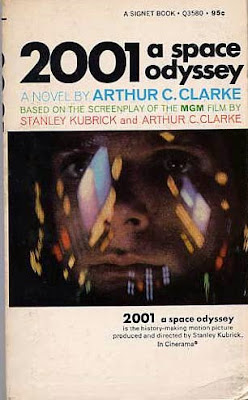 Further, novelization authors can frequently use the extended time available on the printed page to build up characters and incidents for commercial reasons (e.g. to market a card or computer game, to promote the publisher's "saga" of novels, or to create continuity between films in a series); these are introductions of alien matter rather than adaptations necessitated by form. There have been, however, a few instances of novelists who have worked from their own screenplays to create novels at nearly the same time as a film. Both Arthur C. Clarke, with 2001: A Space Odyssey, and Graham Greene, with The Third Man, have worked from their own film ideas to a novel form (although it is worth noting that the novel version of The Third Man was written more to aid in the development of the screenplay than for the purposes of being released as a novel, and that 2001's novelization was written in parallel with the screenplay). Both John Sayles and Ingmar Bergman write their film ideas as novels before they begin producing them as films, although neither director has allowed these prose treatments to be published.
Further, novelization authors can frequently use the extended time available on the printed page to build up characters and incidents for commercial reasons (e.g. to market a card or computer game, to promote the publisher's "saga" of novels, or to create continuity between films in a series); these are introductions of alien matter rather than adaptations necessitated by form. There have been, however, a few instances of novelists who have worked from their own screenplays to create novels at nearly the same time as a film. Both Arthur C. Clarke, with 2001: A Space Odyssey, and Graham Greene, with The Third Man, have worked from their own film ideas to a novel form (although it is worth noting that the novel version of The Third Man was written more to aid in the development of the screenplay than for the purposes of being released as a novel, and that 2001's novelization was written in parallel with the screenplay). Both John Sayles and Ingmar Bergman write their film ideas as novels before they begin producing them as films, although neither director has allowed these prose treatments to be published.
Finally, films have inspired and been adapted into plays. John Waters's films have been successfully mounted as plays; both Hairspray and Cry Baby have been adapted, and other films have spurred subsequent theatrical adaptations. 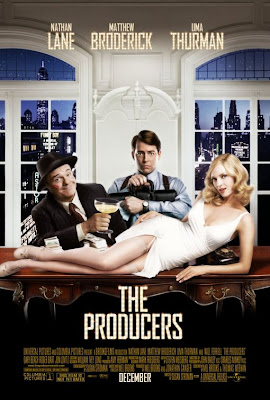 The most recent incidence of this is Spamalot, which is a Broadway play based on Monty Python films. In a rare case of a film being adapted from a stage musical adaptation of a film, in 2005 the film adaptation of the stage musical based on Mel Brook's classic comedy film The Producers was released.
The most recent incidence of this is Spamalot, which is a Broadway play based on Monty Python films. In a rare case of a film being adapted from a stage musical adaptation of a film, in 2005 the film adaptation of the stage musical based on Mel Brook's classic comedy film The Producers was released.
Other adaptive processes
Although not truly a case of artistic adaptation, there have been rare examples of films inspiring or creating religions, such as the new emphasis on Jedi religion coming from the Star Wars films, which themselves adapted other films (notably The Hidden Fortress). Also, films have inspired and been adapted into journalism (e.g. The Thin Blue Line inspired journalistic investigations resulting in the freeing of a death row inmate, and Harlan County, USA inspired investigative reports that aided in labor conflict resolution in the US).
References
Eisenstein, Sergei. "Dickens, Griffith, and the Film Today." Film Form Dennis Dobson, trans. 1951.
The History of Erich von Stroheim's Greed.
From Wikipedia




